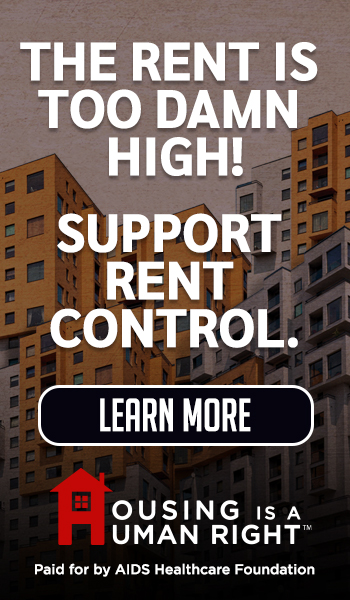Comments
iAUDIT! - In any debate about Housing First, Harm Reduction, or any other homelessness or housing policy, advocates often cite “evidence-based” studies to justify their positions. At an April 2024 public meeting in Santa Monica, L.A. County Department of Public Health Director Dr. Barbara Ferrer and her staff defended drug paraphernalia distribution at local parks by saying Harm Reduction has a proven history of reducing deaths from overdose and keeping people housed. Housing First advocates refer to studies showing the policy provides a stable base for additional services like therapy, thereby improving clients’ long-term outcomes. And we should not forget local officials repeated claims that unsheltered homelessness is decreasing. Listening to these statements, one would expect to find a robust body of empirical evidence to support leaders’ claims. Surprisingly, given how adamant advocates are, there is little objective data backing their position.
Let’s start with Harm Reduction. It’s not a single policy, but a series of elements that include access to sterile paraphernalia, safe use sites, availability of overdose reversal drugs like naloxone, and the offer of recovery services. Its premise is that providing services cannot be based on a commitment to sobriety, since few substance abuse victims want help. As Dr. Gary Tsai, Director of the County’s Substance Abuse and Prevention division, said at the April 2024 meeting, 95 percent of users do not perceive a need for treatment. Harm Reduction is intended to keep people safe until they’re ready to accept recovery services. During that same meeting, Dr. Ferrer said there is extensive evidence that Harm Reduction as practiced by the County is effective, However, when a resident asked her to quantify the benefit, she replied. “One thing that is very hard about public health data is, we use trend lines, it’s hard to show you how much disease we’re preventing in the moment. It’s hard to see what we’re preventing—that’s based on modeling. Everyone needs to look at the data and then think about some other markers.” She concluded that word salad with a platitude that sounds compassionate but offers no empirical value: “We want to keep people alive, so they have a second chance, and they can be all they can be.” Her not-too-subtle inference was that if you oppose Harm Reduction, you support letting people die of overdose. According to other reports, she promised to send the press reports proving Harm Reduction’s success but never did.
In reality, there is little empirical literature supporting current Harm Reduction policies. The vital treatment component, which should be Harm Reduction’s ultimate goal, is by its nature, passive. Since recovery is a not a precondition for services, “the onus rests largely on individuals to know that such services are available and to seek them out”, as a January 2022 article in The Hill stated. Therefore, people in the grip of a substance abuse addiction, 95 percent of whom do not want treatment, are expected to seek it on their own. Although Dr. Ferrer and others cite the number of overdose deaths prevented by the ready availability of naloxone, preventing an overdose is not the same as treating an addiction. Eventually, an addict’s luck will run out and there won’t be anyone there to give him or her a lifesaving dose of naloxone. This is why drug overdose continues to be the number one cause of death among LA County’s unhoused, accounting for 45 percent of all deaths. An additional 14 percent die from heart disease, which is associated with long-term substance abuse.
The reality of Harm Reduction as practiced in Los Angeles is revealed by columnist Christopher LeGras, who, working with the community group the Santa Monica Coalition and on his own, has documented Harm Reduction “services” in Santa Monica’s parks. In August 2024, LeGras reported on his observations of Venice Family Clinic teams in action. As shown in video he recorded earlier, team members freely distributed drug paraphernalia but offered no recovery information. In fact, they rarely spoke to their supposed clients. In the August 2024 article, LeGras reported on a June 2022 meeting with Dr. Ferrer from the County Department of Health, where neither she nor her deputies could provide basic data on the number of people treated nor their outcomes. He also mentioned Dr. Ferrier failed to follow up with more information as promised.
The most serious consequence of Harm Reduction comes from its pairing with Housing First and the policy of “No Barrier” housing. The State of California has made No Barrier Housing First its official policy for a decade. The policy means unhoused people must be offered shelter and housing regardless of their mental health or substance abuse status. As I described in August 2023, the result is that active users are housed with people trying to recover, and local governments incur millions in repair costs from people suffering psychotic breaks.
The mental health and substance abuse needs of homeless people are supposed to be addressed by permanent supportive housing (PSH), where providing a housing unit is paired with supportive services. Like Harm Reduction, advocates claim PSH has a proven track record of success. However, there is little rigorous evidence to back these claims. The January 2022 article from the Hill cited a 2014 report from the American Psychiatric Association that found the majority of studies it reviewed “…found no effect of permanent supportive housing (Housing First approach) on psychological symptoms or alcohol or drug use.” Similarly, a 2018 report from the National Academies of Sciences, Engineering, and Medicine found little evidence that PSH improves health outcomes, stating, “Overall, except for some evidence that PSH improves health outcomes among individuals with HIV/AIDS, the committee finds that there is no substantial published evidence as yet to demonstrate that PSH improves health outcomes or reduces health care costs”.
As social researcher Stephen Eide wrote in 2020, much of the evidence of the success of Harm Reduction and Permanent Supportive Housing is based on rhetoric. As Eide documented, the effectiveness of Housing First is based primarily on limited studies performed twenty years earlier, and on a continual narrative of individual success stories offered as evidence of community-wide benefits. As Eide wrote in 2020 and I detailed in a recent Westside Current column, maintaining this narrative is crucial to preserving the current homelessness structure, even if it means stifling critical voices.
One more area where the rhetoric doesn’t match the evidence is the supposed reduction in LA’s homeless population. LAHSA’s annual PIT count has long been plagued with questions about accuracy. On October 15, LAist released yet another story about inaccuracies in LAHSA's PIT count. This time, the reporter was able to quantify the consequences of the error in the most recent count--as many as 7,900 people.
Besides LAHSA’s count, the RAND think tank has done its own survey for several years. RAND's count, which is conducted by professionals in targeted areas, found significant discrepancies from LAHSA's February 2025 PIT count. That's important because RAND counts three areas with high homeless populations: Venice, Hollywood, and Skid Row. Undercounts in these areas have an outsized effect on the overall count.
As the LAist story says, LAHSA has had problems with the counting software since 2022, but problems go back farther. A 2017 Economic Roundtable report found a lack of year-to-year compatibility and consistency.
Why is the 7,900 number so important? First, it’s more than the combined 2024 and 2025 decreases in the City's homeless population trumpeted by LAHSA and Mayor Bass. Second, major funding decisions are made using the count. As LAHSA's local jurisdiction count web page says, the count will be used to determine areas where new Measure A funding will be targeted. It’s bad enough leaders of the agencies that will receive Measure A money sit on the board that makes funding recommendations, but now they'll make those recommendations using bad data. The latest LAist article comes on top of questions about the 2024 count’s procedural problems and allegations of intentional data manipulation by LAHSA executives. There are so many questions and problems swirling around the PIT count, one should probably regard its veracity with the same level of belief as the latest economic report from North Korea.
What, then, should we make of this lack of evidence? First, we must refuse to mistake rhetoric for proof. Just because an elected or high-level official says something doesn’t make it true. In the auditing world, verbal statements are considered the least reliable form of evidence. When statements can be supported by independent sources, we move closer to the truth. When that evidence can be documented over time and has been verified by more than one source, then we can accept it as true. Second, we must demand action based on that truth. If something isn’t working, our leaders must admit it and demand change. Using rhetoric to defend the status quo is intellectually dishonest and morally wrong. If current leaders are unwilling to face reality, perhaps it is time for us to find new leadership.
Above all, we must remember what’s behind the rhetoric, the numbers, and the evidence. At least 75,000 people sleep on our streets or in shelters every night, and seven of them die there. Regardless of our political views, we cannot blind ourselves to their plight. When we advocate for change, we must advocate for change for them.
(Tim Campbell is a longtime Westchester resident and veteran public servant who spent his career managing a municipal performance audit program. Drawing on decades of experience in government accountability, he brings a results-driven approach to civic oversight. In his iAUDIT! column for CityWatchLA, Campbell emphasizes outcomes over bureaucratic process, offering readers clear-eyed analyses of how local programs perform—and where they fall short. His work advocates for greater transparency, efficiency, and effectiveness in Los Angeles government.)
















